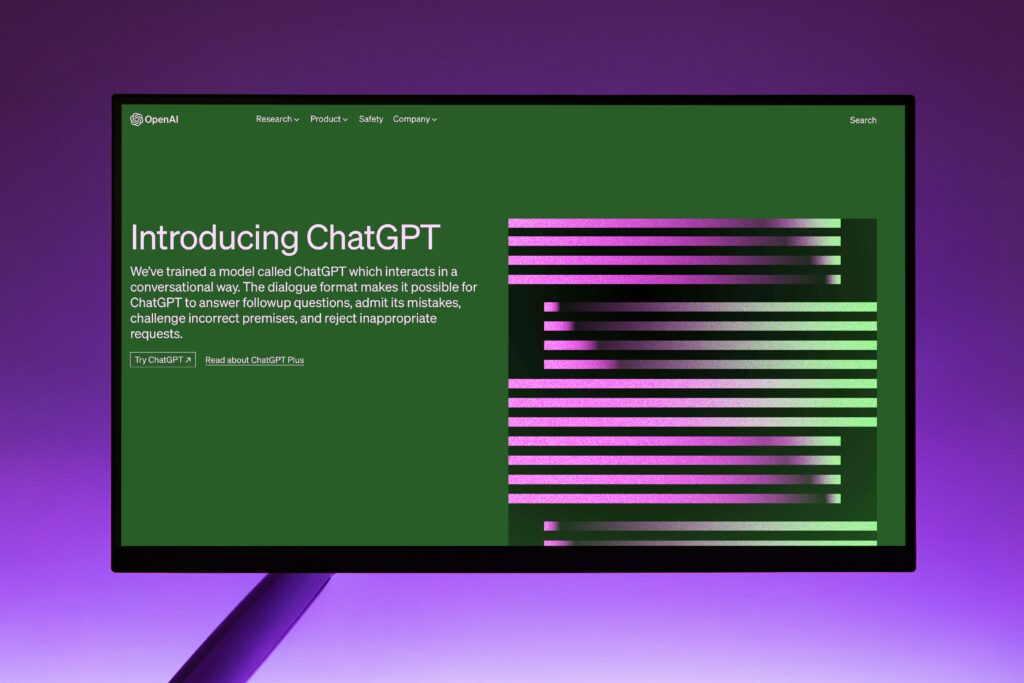Last updated - April 13, 2023
How can you utilize the power of SEO for your eCommerce enterprise? Well, with recent Google updates firmly setting the status quo when it comes to what the search engine considers to be spam versus what qualifies as ‘good SEO content’, now is actually the perfect time to start optimizing your website content and securing high-quality link building services to ensure that you can curate a strong backlink profile for your domain.
Today, we’ll be taking a closer look at Google’s spam policy and how this can be used as a template for maintaining best-practice SEO strategies. Read on to help you practice safe SEO all throughout 2023.
Use Ethical Link Building Strategies
Google’s December 2022 ‘helpful content’ and ‘link spam’ updates garnered a fair amount of fear-mongering from many SEO industry experts. This is primarily because the spam-oriented update saw many domains get hit with harsh penalties, effectively cutting their own search traffic down to zero, in extreme instances. The launch of OpenAI’s first version of ChatGPT also sparked major disruption in the content marketing world, with people trying to reconcile AI’s impact on content production and Google’s spam policy.


What these SEO industry experts may be leaving out, however, is these sites were penalized for fair reasons. Google typically frowns upon websites that utilize black hat SEO practices, one of the most infamous being stuffing keywords into content that’s there just for the sake of it. If your content doesn’t actually provide any tangible value to readers, then it’s unlikely to rank highly on SERPs (or ‘Search Engine Results Pages’). Each Google update is effectively designed to make it harder and harder for low-quality content to rank well on SERPs.
In this lens, Google’s latest update was actually helping to ‘clean up’ the world wide web in a major way: by effectively aiming to wipe mass publishers of spam content firmly off the face of the Internet itself. So all things considered, ethical link builders don’t actually have much to worry about with regards to Google’s evolving spam policy, simply because they’re not actually publishing spam.


So what is ethical link building? As you may have imagined, it’s the practice of building only high-quality backlinks for a domain rather than adopting a ‘more is more’ approach. Yes, the volume of backlinks may have been more of a ranking factor in Google’s earlier days, but thanks to Google’s newly updated E-E-A-T content guidelines (that prioritizes author Experience, Expertise, source Authority, and Trust, respectively), ranking highly on SERPs is less a number’s game and more about playing the SEO game honestly and without any cheating.
eCommerce business owners are advised that your link-building efforts moving forward should be more about quantity over quality. Work with your link-building agency to secure high-quality linking opportunities rather than just settling for publishing with link mills. Chances are that as Google’s future updates continue to honor their spam policy, there likely will be fewer and fewer blatant link mills available for you anyway.
Focus on Providing Value to Your Digital Audience


Google’s algorithm updates and spam policy refreshers for their Search Quality Raters are continuously aimed at ensuring only high-value content is #1 on SERPs. But what exactly is ‘high-value content’? Following Google’s E-E-A-T algorithm, we can boil a working definition of ‘valuable content’ down to just these qualities:
- EXPERIENCE – Content that has been created by an adept/experienced creator. Author bios outlining the writer’s relevant industry experience can help fulfill Google’s requirements for this quality.
- EXPERTISE – Content that has been created by a knowledgeable creator.
- AUTHORITATIVENESS – Content that has been published by a domain that’s considered to be a go-to or high-authority source on that topic or surrounding topics.
- TRUST- Content that is factually accurate and not at all intentionally misleading (for commercial or political purposes).
All four of these qualities are key to ensuring that your website content provides value to your site visitors and fulfills the needs (or user intent) behind their visit.
Although the December 2022 spam policy updates saw Google add the additional ‘E’ (‘experience’) to its E-E-A-T content guidelines, many SEO content specialists consider the ‘T’ or the trustworthiness of your content to be the most important element when it comes to publishing valuable content online. This is mainly because untrustworthy content or content with dubious information can actually be dangerous, as can any case of misinformation.
Google also recognizes this danger, which is why their Search Quality Raters are also provided with thorough guidelines to follow when reviewing YMYL content (or ‘Your Money or Your Life’ content). In the simplest terms, YMYL content refers to any content that has the potential to negatively affect a reader’s finances if the information provided is inaccurate.
Whether you produce content independently or with the use of AI tools, it goes without saying that part of providing a satisfying user experience is ensuring your content doesn’t innately provide bad advice or misinformation to readers – like advising first-home buyers to take out a home loan that reaches their borrowing limit at a time where interest rates are on the rise, as a tasty and topical example.
Failing to review your YMYL content can result not only in Google penalizing your domain for seemingly low-value content but perhaps even opening your business up to litigation in the event that a reader or consumer acts on that low-value content.
Invest in Video Content for Your Business


I briefly mentioned user or search intent above when outlining the value of following the E-E-A-T algorithm. Did you know that search intent doesn’t just refer to written content? In fact, many SEO specialists swear by investing in video content to help rank for keywords with a particular search intent. For example, many keywords with an informational user search intent are better off being targeted through video content rather than written content. This is mainly because searchers with an informational search intent are more likely to be ‘top of the funnel’ shoppers, or consumers who are currently less likely to make a purchase as they’re still seeking information surrounding any products or services within that industry niche.
Search users who are typing instructional keyword phrases into Google (i.e. ‘how to fly a kite’) are also more likely to be looking for visual instructions to follow, or at least written content with visual aids. Just because humans are hardwired to follow visual stimuli, and your content should ultimately be for human eyes, after all. If you believe that the optimal search result for a given query is more likely to be video content over a blog article, then follow that instinct.
Returning back to the E-E-A-T algorithm now, it must also be noted that having a YouTube profile for your business can also help strengthen your business’ authority and establishment within your industry niche. Just make sure that you have enough ideas for video content if you are looking to publish your own company YouTube videos.
If video content isn’t the right avenue for your business, however, or it’s simply not the right time, then you can still utilize the power of intent-based content for driving your SEO strategy.
And What About AI Content?
Finally, with the rise of AI content-generation tools, we cannot comment on Google’s recent link spam update without touching on exactly what the search giant thinks about AI-generated content. And with AI content detectors being developed for both general and commercial use, you can safely assume that Google will be able to recognize AI content when it sees it.


So will you need to refrain or abstain from publishing AI content in order to practice safe, white-hat SEO? Well, surprisingly no! Google has pointedly stated that AI content will be held to exactly the same standards as written content, in that it must be of value to the reader. High-quality AI content can still hope to rank just as any valuable written content could. Site owners are simply advised to make sure that they use their AI content writing tools conscientiously, as a means of enhancing their website’s tone and information but not to the point where they’re effectively just outsourcing all of their site content to a robot.
Truth be told, Google’s E-E-A-T algorithm is inherently designed to prefer highly knowledgeable and factually accurate content with a subjective tone of voice-over content that’s purely cold and objective. In this regard, unrefined AI content can be interpreted as ‘spam’ by Google, just as any apathetically produced content can be labeled as such.
In other words, there’s no need to abstain from using AI to generate your SEO content. So long as your content still reads naturally and maintains a subjective yet still authoritative tone, you will still be able to rank on SERPs for the keywords you’re looking to target.
Practicing Safe SEO: Key Takeaways
All things considered when it comes to SEO, a black hat definitely does not equate to a black stallion. All the infamous ‘get SERP results quick’ schemes that may be pitched to you by SEO bros just simply are not worth the severe penalties that may follow if the Googlebot catches wind of your dirty deals.
And we’re not just referring to black hat SEO practices of days gone by here, these being age-old ‘hacks’ like spamming your keyword across your entire website in white text on a white background. Can you believe that that practice ever worked, by the way?
We’re also talking about buying low-quality backlinks in bulk rather than developing a refined presence for your website and brand online. And why wouldn’t you want to do this? Truthfully, putting in the work and actually investing in SEO as a long-term strategy can yield far greater results than you can even expect, both in the immediate as well as over the course of your business’s lifespan.
And that’s ultimately what Google’s spam policy update seeks to achieve: a world wide web that’s actually filled with high-quality content in a variety of forms, rather than just mindless spam that commercial entities are endlessly profiting from. In this regard, the pages upon pages of new guidelines provided by Google in their helpful content and link spam updates boils down to one thing only, and that’s value.
So long as the content you’re publishing follows the E-E-A-T algorithm to a tee (and an ‘E’, ‘E’, and ‘A’!), you’ll find that your chances of ranking on SERPs increase exponentially.











